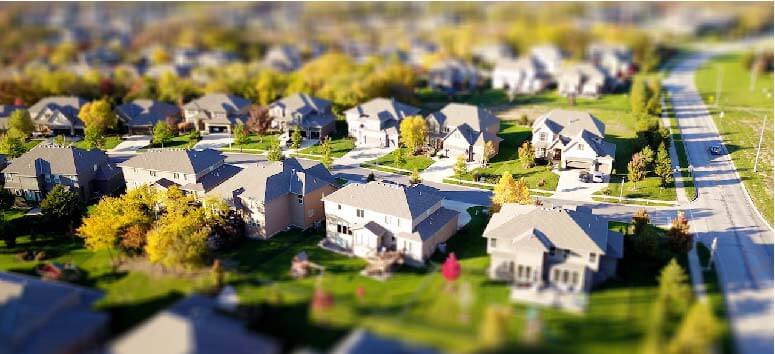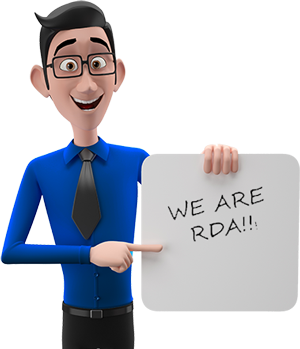Professional HOA Website: Connect Your Community
In today’s digital age, a professional HOA website is essential for fostering effective communication and engagement within homeowners’ associations (HOAs). The rise of digital platforms has transformed the way communities interact, making it crucial for HOAs to maintain a strong online presence. Embracing technology can significantly enhance both resident experience and management efficiency.
A professional website serves as a central hub of information, offering numerous benefits that support community engagement and streamline essential processes. From improving communication among residents to optimizing management tasks, the impact of a well-designed website is both extensive and valuable. Additionally, a digital platform saves time and resources for the HOA, making it a strategic asset for any community association.
In this article, we will delve into the various reasons why your HOA needs an online presence, including the key benefits of having a professional website. We will explore effective features, community-building opportunities, and the importance of maintaining secure information. Join us as we redefine the role of digital platforms in enhancing community living through a robust online presence.
The Importance of Online Presence for HOAs
A well-managed homeowners association (HOA) website is a critical tool that not only attracts potential homebuyers but also keeps current residents informed and engaged. Such a platform is designed to be organized and user-friendly, ensuring that essential community information, from upcoming events to association updates, is easily accessible.
Content creation and design best practices are paramount in maximizing an HOA website’s effectiveness and fostering better communication within the community. These digital platforms act as a central hub, offering quick access for residents to share news, and resources, and collaborate on community matters, thereby enhancing neighborhood connectivity.
Moreover, embracing a professional online presence is vital for any HOA as it signifies a modern approach to community management. The development of resident-only portals, paperless forms, and email updates contributes to a streamlined, eco-friendly environment. A dynamic website serves as a cornerstone of a thriving and connected community, fundamentally elevating the way HOAs serve their members and represent their community to the wider world.
|
Benefits of HOA Online Presence |
|---|
|
Improved Communication |
|
Enhanced Member Engagement |
|
Greater Accessibility to Information |
|
Paperless Operations |
|
Professional Image |
Key Benefits of a Professional HOA Website
A professional HOA website is integral to the modern operation and image of homeowner and condominium associations. It acts as a potent communication channel that extensively improves interaction and information dissemination among board members and residents. A well-organized, easily navigable site establishes clear, up-to-date access to pertinent community details, fostering a positive user experience.
One key aspect is the incorporation of a resident portal, which optimizes the handling of community affairs, including violation management and amenity bookings. A digital platform naturally bolsters community ties and participation, stimulating residents to take an active interest in their neighborhood. Additionally, with strategic content and search engine optimization, the site becomes an invaluable asset, engaging current residents and attracting prospective homeowners.
Enhanced Communication Among Residents
An HOA website provides a new avenue for streamlined communication. It empowers boards to broadcast vital updates and keep the community informed with an online announcement or news section. Contact forms embedded in these websites enable residents to communicate effortlessly with the HOA board, enhancing transparency and responsiveness. A comprehensively designed website presents a centralized location for essential information, which in turn promotes community participation and aids in alleviating the administrative work for board members.
Improved Access to Information
Key documents, announcements, and event specifics are made readily available through a professionally structured HOA website, simplifying the interaction process. Reliable, accessible online platforms engender credibility and trust within the community. These websites often feature password-protected areas, offering homeowners convenient access to personalized information and services. User-friendly interfaces play a critical role in encouraging informed engagement and fostering a sense of collective responsibility.
Streamlined Management Processes
Automation of administrative tasks, such as handling maintenance requests and processing payments online, leads to more efficient management workflows. This facilitates better accountability, offering tangible evidence of interactions between the HOA and its members. Features like resident-only portals aid in managing amenities and other crucial operations adeptly. An intuitive and organized website improves resident satisfaction by simplifying access to information and community services.
Increased Community Engagement
The introduction of online discussion forums, polls, and event calendars on an HOA website fosters greater interaction among residents. By offering details about community events and maintaining transparency, HOA websites build trust and encourage participation in local activities. A website that is navigable and engaging enhances the resident experience, driving them to interact with HOA initiatives and stay informed.
Cost and Time Savings for Management
With a robust HOA website, communication becomes more efficient, reducing the need for management to field routine inquiries. Self-service features on the website allow residents to handle tasks independently, thus reducing the administrative load on management. Digital transformation through the website can lead to a remarkable reduction in time spent on manual processing, resulting in heightened efficiency. A strong online presence mitigates the need for direct management intervention by educating residents, potentially reducing conflicts. Marketing the community via the website can attract new homeowners efficiently, saving on advertising costs.
These key benefits underscore the importance of investing in a high-quality, professionally designed HOA website, tailored to the unique needs of the community it serves.
Features of an Effective HOA Website
An effective HOA website combines practicality with visual appeal, ensuring that homeowners can navigate the site with ease while engaging with content that resonates. A well-organized layout with clear menu options and an intuitive design allows homeowners to find information about their community quickly. High-quality, custom images and graphics showcase the community’s unique character and build a more personal connection with residents. It’s crucial for these sites to avoid over-complication; simplicity reigns, focusing on quick, efficient access to specific information. Essential features such as a resident-only portal, online forms, and a community calendar enrich the user experience, enhancing resident engagement and streamlining communication within the HOA. Additionally, capabilities such as online payment processing and maintenance request forms provide convenience, reducing the reliance on in-person interactions and making it easier for both the homeowners and the management to stay on top of essential tasks.
User-Friendly Design
The design of an HOA website must prioritize the user experience, fostering trust and credibility amongst the community. A user-friendly HOA website is one that enables residents to effortlessly locate important documents, announcements, and event details. It should utilize a logical structure with simplified navigation, avoiding clutter and ensuring that users can find what they need without unnecessary clicks or confusion. Quality images and graphics not only attract attention but also make the website feel more genuine and relatable, creating a positive first impression for both current and potential residents.
Secure Document Management
Homeowners associations have a legal and practical responsibility to provide secure access to key documents, such as governing documents, policies, and forms. An effective HOA website features a well-organized document library that allows homeowners to retrieve essential documents at any time, which is especially important in states where digital access is mandated by law. The use of secure systems for document management ensures compliance with statutory requirements, protecting both the HOA and homeowners’ sensitive information.
Event Promotion and Resource Sharing
An integrated community calendar on the HOA website is crucial for keeping residents informed and engaged with local events and meetings. Email updates with RSVP links and event details contribute to higher participation rates and a more connected community atmosphere. Photo galleries and the use of online forms for information submissions also promote resource sharing and contribute to a stronger sense of community by allowing residents to actively participate in the digital environment of their HOA.
Payment Processing Capabilities
Streamlining financial transactions is beneficial for both homeowners and the management. Implementing an online payment portal via the HOA website offers a convenient avenue for handling dues, fees, and other assessments. The portal aids in maintaining organized records and eases the bookkeeping responsibilities of the HOA. Payment security is a paramount concern, which is why secure payment processing features are integrated to protect financial information during transactions.
FAQ and Information Sections
Providing a comprehensive FAQ section on the HOA website is key to effective communication. This section should address common questions regarding HOA rules, processes, and services, helping homeowners to understand their obligations and rights clearly. Downloadable forms and easily accessible documents allow residents to handle requests and refer to regulations autonomously, fostering a self-reliant and informed community. Additional resources, such as educational articles and links to local amenities, enrich the overall utility of the HOA website, empowering residents with valuable knowledge related to community living.
Building a Sense of Community Through the Website
A well-designed HOA website is akin to a digital front door that warmly invites residents into the fold of their community. It serves as a centralized hub where engagement can flourish and access to crucial information is just a click away. Such a platform not only enables homeowners and property management companies to tackle the day-to-day tasks with efficiency, but it also plays a crucial role in fostering community spirit. Online communication channels provided by the website can improve trust and credibility among the members, showcasing the competency and transparency of the community’s management. Features such as resident-only portals, informational pages, and the opportunity to sign up for email updates encourage a two-way dialogue that is essential for the health and vibrancy of the community. When residents feel connected and have the tools to communicate easily with one another and the HOA board, community involvement grows and apathy shrinks, leading to a more active and contented neighborhood.
Creating Platforms for Resident Interaction
Interactive features are the core of any vibrant Homeowners Association Website. They transform a simple informative page into a thriving milieu for resident interaction. Online forums can provide a space for residents to voice opinions, share tips, or offer support, while surveys can solicit feedback on community issues, helping the HOA board gauge resident satisfaction and make informed decisions. An intuitive interface allows for quick access to these features, ensuring residents feel welcome to contribute and engage. Additionally, an event calendar simplifies the process of staying abreast of community happenings, encouraging residents to take part in upcoming events. Through these interactive tools, residents are not just informed, but involved—a key ingredient in nurturing a sense of belonging and bolstering the community fabric.
Showcasing Community Events and Activities
Every community has its own unique calendar of events and activities, and an HOA website is the perfect showcase for these happenings. An integrated Community Calendar presents a consolidated view of what’s upcoming, from board meetings to block parties, providing residents with a reliable resource to plan their participation.
Additionally, the Association Website can serve as a gallery to display public photos of past events and the neighborhood’s amenities, creating visual appeal and fostering a stronger connection among community members. By utilizing features like RSVPs and email announcements of events, the website ensures that homeowners are not only informed but also enticed to partake in the communal life. Moreover, a digital bulletin board serves as a day-to-day reference point for important announcements and Community News, ensuring that every resident is kept in the loop and a sense of community involvement is constantly nurtured.
Attracting Potential Residents
Centralizing key information and updates on a professional HOA website not only streamlines communication for current residents but also plays a critical role in attracting potential homeowners. By offering easy access to pertinent documents, community news, and clear announcements, these websites reflect the organization and proactive management of the homeowners association. This not only aids individuals in their decision-making process but also showcases the community’s commitment to transparency and organization.
Further elevating the appeal to prospective residents is the interactivity of an HOA website. Online forums and event calendars provide glimpses into the neighborhood’s vibrancy and the opportunities for involvement that await new members. Such dynamic features present an active community, catering to those who are seeking connection and participation in their next place of residence.
Moreover, a website that is navigable and rich with information minimizes in-person inquiries, thereby enhancing the experience of potential homebuyers. It stands as an invaluable tool, shaping positive first impressions and setting the stage for new community relationships before a single in-person greeting is exchanged.
Importance of Visual Appeal
A website for a homeowners association (HOA) is not just a digital tool; it represents the community’s image, making its visual appeal crucial. High-quality images and a contemporary layout not only enhance the aesthetics but also the functionality, enabling quick access to vital resources. This blend of beauty and utility can significantly bolster a resident’s experience on the platform.
Key Aspects of Visual Appeal:
- Design: Modern, clean design promotes ease of navigation.
- Images: High-resolution photos reflect the community’s essence.
- Layout: An organized interface ensures information is readily available.
The visual allure of an HOA website contributes to a user-friendly environment where important documents, updates on upcoming events, and community news are but a few clicks away. Interactive components, such as online forums and calendars, further aid in fostering a sense of belonging among residents by facilitating digital interaction and participation.
In conclusion, the visual appeal of an Association Website is not only about an attractive façade but also about building a bridge that strengthens community ties through engaging design and structured functionality.
Highlighting Community Values and Amenities
A well-designed website for homeowners associations (HOAs) plays a crucial role in reflecting the community’s values and showcasing its amenities. It serves as the digital front door for both current and potential residents, providing quick access to a variety of helpful resources and services unique to managed community living.
|
Community Feature |
Description
|
|---|---|
|
Amenities Page |
Highlights facilities and services offered within the community, enticing homebuyers through a visual and descriptive showcase. |
|
Events Calendar |
Keeps homeowners informed of upcoming events, promoting active participation and fostering a communal spirit. |
|
Governing Documents |
Offers easy access to rules and policies, ensuring transparency and aiding in the community’s governance. |
|
Community News |
A section dedicated to delivering timely updates and news, increasing resident satisfaction by keeping everyone in the loop. |
Utilizing these features, an HOA website ensures that members have all they need just a few clicks away, from the latest community news to crucial governance documents. The convenience of online access eliminates the need for cumbersome paper forms and streamlines communication. Through resident-only portals, members can even receive email updates directly, ensuring everyone is informed and engaged with the community’s heartbeat.
Keeping Sensitive Information Secure
When creating a website for a homeowners association (HOA), it is crucial to handle sensitive information with the utmost care. To tackle this, management companies and software company solutions often recommend:
- Public vs. Private Access: Public accessibility of the website should be limited to general community news, upcoming events, and non-sensitive community association updates. In contrast, sensitive documents like financial reports and legal issues must be restricted to members within a secured, resident-only portal.
- Member-Exclusive Content: Meeting minutes, which contain discussions and decisions made by the HOA, are to be posted in a non-public portion of the website to ensure privacy.
- User Authentication: The integrated portal aimed at board members or the property management companies should be safeguarded by a password-protected system to ensure that only authorized personnel have quick access to residents’ personal data.
- Security Measures: To prevent the potential hazards associated with open public forums—such as sensitive discussions being compromised—forums should be carefully structured or avoided altogether.
By adhering to these security practices, an Association Website can maintain a transparent line of communication with its members through email updates and reduced paper forms while protecting vital information.
Regular Maintenance and Updates
Regular maintenance and updates are fundamental to the smooth operation of an HOA website. These enhancements not only ensure that residents receive the latest community news and announcements promptly, but they also streamline the overall communication process within the community. To facilitate this, many homeowners associations turn to professional website services that handle these updates and maintenance tasks. Such services free up HOA board members from technical responsibilities, allowing them to focus more on decision-making and governance.
An updated HOA website can be augmented with advanced functionalities like secure online payment processing, simplifying dues collection and record-keeping. The integration of online maintenance requests further streamlines administrative workflow, allowing residents to report issues directly through the website. As technology advances, website upgrades become available, offering new features for an enhanced user experience. These may include improved photo display, user-friendly layouts, and compatibility with various mobile devices, which is essential given the prevalence of smartphones for internet access.
For homeowners associations, a vibrant online presence is indispensable. It should encompass a portal that acts as both a public site for general community information and a private gateway. The latter provides community owners with exclusive access to key documents and personal data, which is vital for preserving privacy and fostering trust within the community.
Importance of Current Content
An HOA website thrives on the currency of its content, offering residents the freshest resources and updates for everyday community living. By uploading important news, announcements, and notices on a regular basis, members stay well-informed and involved in community events. This level of interaction reinforces the sense of engagement and can significantly boost community spirit.
Along with updates, the inclusion of educational articles and resourceful links contributes to resident knowledge, potentially increasing their contentment with the community. A well-managed website also serves to streamline communication. By centralizing the information, it reduces the number of individual inquiries HOA board members need to address, facilitating better time management for both parties.
In addition, a website sporting contemporary, easy-to-navigate design ensures users can efficiently find the content they are after. User-friendly websites encourage routine interaction, instilling confidence in residents to rely on the website as a regular touchpoint for community updates and pertinent information.
Technology and Security Measures
In an age where data breaches are quite common, the importance of robust security on an HOA website cannot be overstated. This means adopting protocols to protect sensitive resident details and financial documents. Password-protected portals, only accessible by authorized personnel, are critical in maintaining confidentiality for items like meeting minutes and owner information.
Secure website connections, denoted by HTTPS, provide an added security layer, shielding user data during site interactions. As residents navigate the website, HTTPS encrypts the data, preventing unauthorized access and ensuring a secure browsing experience.
User-friendly design is not just about convenience; it also directly links to security. A straightforward and intuitive design aids residents in finding the information they need quickly, with minimal confusion. This minimizes the necessity for residents to reach out directly to HOA board members, reducing the risk of sensitive inquiries being intercepted or mishandled.
HOAs may find greater assurance in custom-built websites developed by professionals versus off-the-shelf free templates. Professionally designed sites frequently come with tailored security measures that address the particular needs of the community, and they are often less susceptible to vulnerabilities than their free, less customizable counterparts. Investing in a reputable design and hosting service thus becomes a strategic decision in bolstering the community’s online defenses.
Conclusion: Investing in Your HOA’s Digital Future
In conclusion, investing in a user-friendly, informative website for your homeowners association (HOA) is an invaluable move toward enhancing the digital future of your community. Not only does a professional HOA website provide a centralized hub for residents to access key information and communicate with the association, but it also meets the legal requirements, as seen in mandates like those from Texas State Laws. A robust online presence can additionally attract potential new homebuyers and professionals connected to real estate, contributing positively to your community’s reputation and potential growth.
With tailored design principles, your site ensures that details such as upcoming events, community news, and important documents are easily accessible, facilitating quick access for residents and eliminating the need for cumbersome paper forms. Integrating features like email updates and resident-only portals can also enhance connectivity and foster trust within your community. By aligning with a capable software company or property management companies that understand the unique needs of condominium associations and community associations, your HOA can open new channels for engagement and make strides towards a sustainable and connected future.
Related Articles:
- Homeowner Association Newsletter: Capturing Audience Attention Effectively
“Learn how to effectively capture your audience’s attention with HOA newsletters.” - How Software for HOA Management Can Streamline Your Operations
“Discover how software solutions can streamline operations for efficient HOA management.” - HOA Board Members: Fostering Positive Relationships
“Strategies for HOA board members to foster positive relationships within the community.”








